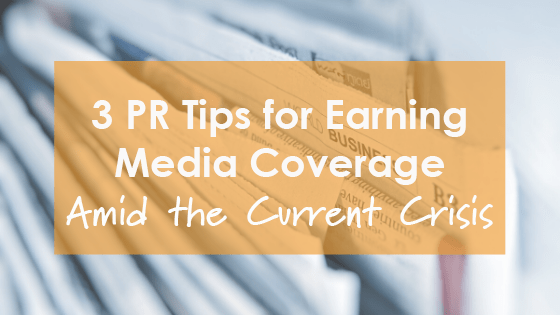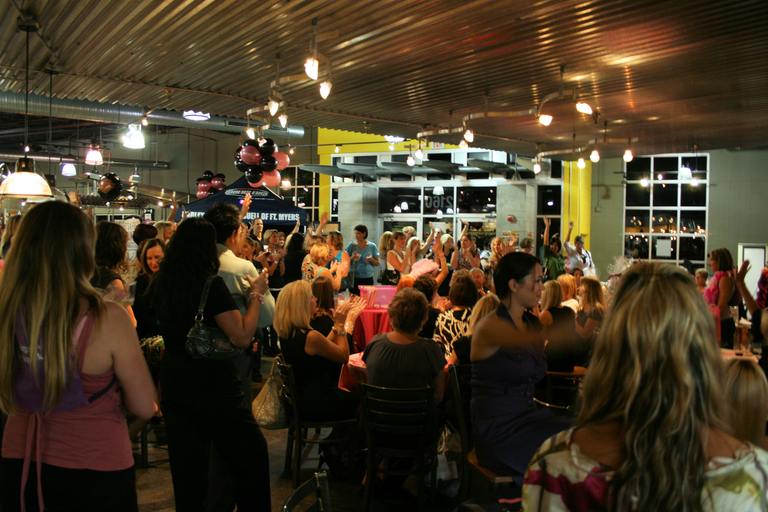
3 PR Tips for Earning Media Coverage Amid the Current Crisis

When news first broke about COVID-19 being declared a global pandemic, it consumed media’s attention, flooding the already saturated news landscape.
Fast forward to now, COVID-19 still makes up a majority of the ongoing news coverage locally and around the world. However, media has started to normalize a bit, shifting its focus to other non-COVID-19 related topics.
While we certainly haven’t returned to “business as usual”, it’s still very important to continue communicating your business news, updates, etc. to media, as well as pitching them stories where your expertise might make a good fit. Journalists are looking for non-COVID content too.
Breaking through the clutter right now might sound like a daunting task. Read on to learn about three tips that can help you get noticed and earn coverage.
1. Reach Reporters Where They’re At
Typically, an editor or reporter’s email inbox is inundated with messages and pitches. Therefore, it’s generally more effective and impressionable to pitch stories by calling your media contacts on the phone. Try this approach first, but keep in mind that many journalists could likely still be working remotely and may not be available at their office number. If their cell phone number information is public (I.E. in an email signature, etc.), don’t be afraid to try reaching them on that line too.
If phone isn’t an option, email is a good alternative and can still be an effective way to share news and pitch stories. Be sure to follow best practices for distributing news releases and crafting pitches. This includes sharing newsworthy, timely information, distributing releases during morning hours (rather than at the end of the day) and avoiding Mondays/Fridays, using a strong, compelling subject line, and personalizing pitches.
No matter the case, remember to research publications, journalists, and their respective beats or specialties. A listing of reporters/editors and their coverage areas can be found on most media outlets’ websites. Sending news to the right place and person will help increase your chances of getting picked up.
2. Stay Relevant
Identify ways your brand could be part of the story to help keep your business or organization relevant. For instance, promote any specific initiative that was developed as a direct result of the pandemic – I.E. a fundraising program to benefit frontline workers or a special service offering created to help small, local businesses.
Human interest and/or “feel good” stories also tend to attract media attention. This is especially true as we try to move forward and showcase the good being accomplished despite hardship and challenges.
You can also share any unique survival stories your business may have or problem-solving measures taken internally that led to an interesting concept or new service. Further if you have any insight or perspective on industry trends going forward/post-COVID-19 you can craft a pitch or news release that positions you or your company as an expert on the topic as a way to be included in future stories.
Additionally, continue to share pertinent information about your business as it relates to your current open/closed status, hour changes or adjustments, health and safety protocols implemented, etc. If you have any virtual events, in-house reopening events, or new promotions, share that information too.
And, feel free to share other non-COVID related news. This could include promotions, new hires, new services, etc. – general business updates.
3. Include Photos or Video
If possible, include photos or video with your press release or story pitch. They help create visual interest and during this time, when reporters aren’t out in the field as frequently, they can be of great use. Plus, TV requires a visual angle… if you can show the reporter what you’re referring to and what they could use in their broadcast, it could help pique their interest.
In addition, photos and video can help generate coverage in the form of news briefs both in print (perhaps in a local good news roundup weekly section) and digitally on social media, in email newsletters, and otherwise. Sometimes television stations will also make use of video components when sharing news briefs on-air too (though they generally prefer to capture and use their own footage).
Don’t forget, if the individuals pictured are readily identifiable, you’ll need to caption photos with the names of each person. Make sure you have their permission to share it with media too and be sure to have any necessary waivers, etc. signed as well. Seek legal counsel as necessary.
Earned media coverage is a great way to publicize your business and communicate essential information, especially now as we navigate reopening post-COVID-19.
For more information on how PTE can help you earn coverage and manage your public relations needs, contact us.
You May Like

Image Award Results - PTE Brings Home 3!
We are pleased to announce PTE won 3 awards at the local Florida Public Relations Association’s Image Awards ceremony recently! The firm won a Judges’ Award and Award of Distinction for their work with local nonprofit, Blessings in a Backpack and their Girls Night Out fund-raiser and another Award of

The Importance of Setting Goals - for Career Success
Recently we had the opportunity to attend The Blue Chip Awards Luncheon. A wonderful afternoon filled with successful small business people, great food and inspirational stories, the highlight was key speaker, Nikki Stone. An Olympic gold medalist, Nikki overcame much adversity and physical challenges throughout her career and stressed the

The Value of Keeping Your Logo Fresh
Many companies, large and small, can be seen refreshing an existing logo and you may ask yourself why. There are a variety of reasons and we want to share some with you. Whether you are looking to develop a logo for your new business or are wondering if your current